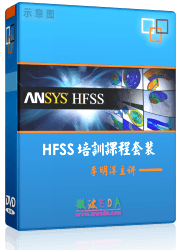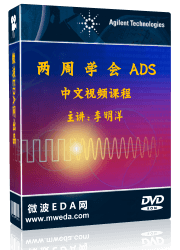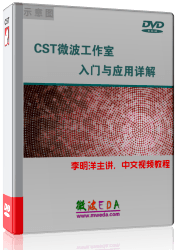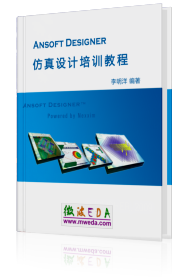0D / 3D Eigenmode Result
Result Templates Template Based Post Processing Template Based Post Processing
This template allows the extraction of certain 0D quantities which
are related to a given eigenmode. Some of these quantities are fully described
by the mode number (e.g. the eigenfrequency), others require the definition
of an integration path / a subvolume or the transit time factor of a charged
particle that interacts with the mode.
Note: by entering many mode-numbers
(e.g. "1-10"), the results will be automatically extracted for
all modes. As a result the template automatically switches to "1D"
and a 1D table is generated in this case.
Result value
The 0D quantity of interest can be chosen from
within this combo box. The different options are: Frequency, Q-Factor
(Perturbation), Total Loss (Perturbation), Total Energy, R over Q, Shunt
Impedance, Voltage, Q-Factor (lossy Eigenmode).
Frequency:
Extracts the eigenfrequency
of the mode.
Q-Factor
(Perturbation): Determines the internal
Q-factor for the lossfree mode under the assumption that a perturbation
method can be applied. For this operation the materials are no longer
regarded as loss-free and their specific conductivities are taken from
the settings formerly applied under Results->Loss and Q calculation.
Total
Loss (Pert.,Aver.): Determines the average
total loss for the lossfree mode under the assumption that a perturbation
method can be applied. For this operation the materials are no longer
regarded as loss-free and their specific conductivities are taken from
the settings formerly applied under Results->Loss and Q calculation.
Total
Energy: Determines the total energy stored in the eigenmode.
R
over Q: Delivers the impedance vs. Q. This number is a loss independent
characterization of cavity geometries.
Shunt
Impedance: Calculates the shunt impedance by dividing voltage square
by perturbation loss.
Voltage:
Integrates the voltage along the given voltage integration path.
Q-Factor
(lossy Eigenmode): Calculates the Q factor based on the complex
eigenfrequency of a lossy eigenmode.
Q-Factor
(external): Calculates the Q factor based on the external port
losses of a eigenmode.
Q-Factor
(loaded): Calculates the loaded Q factor (1/Q_loaded = 1/Q_external
+ 1/Q_pertubation).
Frequency
(loaded): Calculates the frequency of the loaded resonator. Due
to external coupling through ports, this loaded frequency is slightly
shifted to the unloaded eigenfrequency, calculated via action Frequency.
Mode numbers
Defines which mode needs to be considered. It
is possible to consider multiple modes with only one definition (e.g.
"1-10")
Voltage Integration Range frame
Within this frame the start point and end point
of a voltage path can be defined. Different resolutions controlling the
numerical effort for the integration applied can be chosen. For those
operations where a charged particle transiting the resonator is involved,
the particle speed can be controlled.
Direction
Defines the orientation of a straight line that
acts as a voltage integration path. This line has to be parallel to one
of the coordinate system directions. Therefore the choice is restricted
to X/Y/Z.
Xmin/Xmax, Ymin/Ymax, Zmin/Zmax
Only one pair of these settings is available
at a time. Controls start point and end point of the line integration.
X/Y/Z
Two out of these three settings are available
at a time. Defines the offset of the line integration path with respect
to the axis of the coordinate system.
max. range
Enlarges the integration path to its maximum
possible extent if the check-box is marked.
Sampling
Coarse/Normal/Fine/Very Fine. These four sampling
rates can be chosen within this combo box in order to control the numerical
effort and accuracy of the integration.
Transit Time Factor
consider part. velocity
This check box specifies whether the particle鈥檚
velocity should be assumed as being the speed of light or a value different
from this.
Beta
Defines the particle speed as a fraction of
the speed of light. Only active if the consider part. velocity box is
activated.
DrawPoints
Visualizes the line integration path and the
chosen sampling rate by red dots. This option is only available after evaluation of an voltage integral.
Logfile
Delivers some further background information,
once the operation has been performed. This option is only available after evaluation
OK
This button completes the setup of the template.
The new entry will be added to the list of templates which are executed
automatically after each run. The default name of the template is set
according to the settings, as long the name has not been changed manually.
Cancel
Aborts the setup of the template and closes
this dialog box without performing any further action.
Help
Shows this help text.
See also
Preloaded
Result Templates




HFSS视频教程
ADS视频教程
CST视频教程
Ansoft Designer 中文教程
|